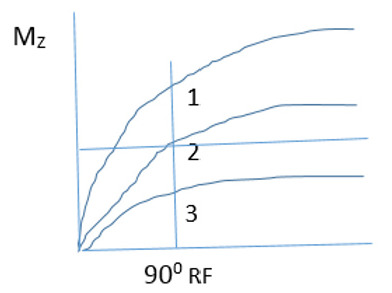Introducing MRI
Dr. Lipton has presented his one-week intensive course, “Introducing MRI” since 2001. Currently, the course is given live at Columbia University Irving Medical Center in New York City twice annually and receives consistently outstanding reviews. Taking students through MRI “from A to Z” without assuming any specific technical or mathematical background, “Introducing MRI” comprises 30 hours of highly interactive instruction. Two key features underpinning the accessibility of the course are its rigorous yet largely non-mathematical approach and its emphasis on direct relevance of key concepts to the creation of clinically useful MR images of all types.
Just fantastic!
Thanks a lot! Very helpfull!
Great videos here, thank you Sir for sharing this knowledge.
I wish you a Happy Teacher’s Day… I’m lucky that I found those videos and a great teacher like you. Thank you with lots of love from India
Your course is super interesting and clear for people like me who are not too physics/mathematics inclined.
You have broken the MRI technology into pieces, to the simplest level for a dummy. Albert Eisenstein said if you can not explain well enough it means you don’t understand it well enough. Thank you.
Great clarity and pace, thank you!
You are amazing. I’ve been trying to understand my lecturer’s notes for the past 2 hours and you made more sense to me in 7 minutes than he ever has. Thank you.
Thank you for clarification, as always!
I just wanted to drop you a line to say that I’m around half way through your internet series of lectures and they are fabulous. I work in radiotherapy, as a physicist, and although I had a vague grasp of the principles of NMR, your lecture series has clarified so many confusions for me. I also really appreciate your teaching style and hope I can learn a little of that too!
Thank you for providing these videos. These do really help when studying these concepts.
“This man is a rockstar!”
I am very lucky to be able to see your lectures on MRI on youtube. Those lectures are informative and easy to understand, so I can really understand the mechanism, and do not have to learn by heart.
“Thanks prof for magnificent information and explanation for these basics.”
Thank you so much for sharing this!! Dr. Lipton is such a great teacher.
“Absolutely fantastic! So far, best tutorial for MRI physics I’ve ever encountered. I’ve binge watched in the past few days and I’m excited about the next chapters.”
I have gone through all the lectures given by you on YouTube, and these lectures really helped me understand the inner physics of MR Imaging and some of the applications.
I am writing to you to express my admiration and appreciation for all the efforts you’ve done working on your amazing MRI course and making it available on Youtube. I’ve watched more than half of the episodes and can surely say that I’ve never been as pleased listening to other MRI lectures as I am listening to yours. You simply make it easier and amusing to digest the hard rough subject of MRI physics and techniques.
Thank you for this wonderful collection of lectures on MRI, Dr. Lipton!
Best study material and way of presentation.
GREAT WORK… GREAT TEACHING…HATS OFF TO YOU SIR…
I am halfway through your lecture series on YouTube (Introducing MRI). I feel compelled to share my most sincere gratitude for providing such a stellar resource. I am a neurologist transitioning to clinical research. I am learning to use MRI (i.e. diffusion MRI), but I needed a self-paced resource to teach the basics (especially in the times of COVID). Your lecture series is ideal. Thank you so very much.
“I just started this wonderful lecture. Thank you!”
“Thank you so much for recording these lecture and posting them!! NOTHING has come close to being as clear and understandable to me concerning MR physics. I cannot thank you enough.”
I am very grateful to be able to view your lecture online from so far away and also read your book. I am a medical student, currently embarked on the journey to understand MRI, being a special interest of mine and also wishing to do research in this field in the future. I have tried many resources and the only one I do ‘resonate’ with is your way of explaining. I appreciate your work very much, thank you.
The content of the course is remarkable and your teaching skills are also incredible.
I am highly inspired by the amazing lecture series given by you on MRI. First of all, thank you so much for your valuable lectures on MRI.
Best lecture about perfusion MRI that I know. Congratulations!
“Thank you for sharing this amazing knowledge.”
I think I’m slightly in love with this man. THANK YOU!
How to Access “Introducing MRI”
- Attend live: Request enrollment via email to sa2648@cumc.columbia.edu
- View the video version on YouTube.
- Buy the book, Totally Accessible MRI, a highly readable companion to the live course written by Dr. Lipton.
- Read Totally Accessible MRI online.
- Ask your library for the print or electronic version.
